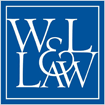Document Type
Article
Publication Title
Akron Law Review
Publication Date
2020
Abstract
Patent eligibility is one of the most important and controversial issues in intellectual property law. Although the relevant constitutional and statutory text is extremely broad, the Supreme Court has significantly narrowed the scope of patentable eligibility by creating exceptions for inventions directed to abstract ideas, laws of nature, and natural phenomenon. In particular, the Supreme Court’s decisions on this issue over the past decade have created considerable uncertainty regarding the patentability of important innovations. As a result, numerous stakeholders have called for reform of the current rules regarding patent eligibility, and members of Congress have introduced legislation to amend the Patent Act to provide greater clarity.
The current quandary regarding patent eligibility is nothing new, however. In the 1970s and early 1980s, the Supreme Court was similarly challenged by inventors’ attempts to obtain patent rights to a number of then-emerging technologies, including computer software and genetically-modified organisms. After initially concluding that processes consisting of or including an algorithm were not patentable subject matter in Gottschalk v. Benson (1972) and Parker v. Flook (1978), the Court abruptly changed course in Diamond v. Diehr (1981), holding that the use of a computer program to implement a method for curing synthetic rubber was eligible for patenting. Similarly, in the life sciences, the Court overturned a USPTO decision rejecting a patent on a genetically-modified bacteria, concluding in Diamond v. Chakrabarty (1980) that a non-naturally occurring organism was patent eligible. These decisions ultimately opened the door to thousands of patents covering computer software and biotechnology innovations. Moreover, they remain good law and are widely cited, including by the Court itself.
To better understand these older patent eligibility decisions, this Article examines archival material from the chambers of Justice Lewis F. Powell, Jr., who was one of the “swing” votes on the Burger Court. Using this previously-untapped resource, we report several notable findings, including that the Court initially voted to find the process in Flook to be patent eligible, only for two Justices to subsequently switch their votes. In addition, Justice Powell privately expressed the view that his vote in Flook was in error, ultimately changing sides in Diehr to adopt a more expansive view of patent eligibility. We also find evidence that the Justices and their clerks often struggled with the technological complexity of these new innovations in assessing their patentability, frequently commenting that Congress was better body for addressing such issues. We then offer several implications from these findings for the ongoing debate regarding the scope of patent eligibility.
Recommended Citation
Christopher B. Seaman & Sheena X. Wang, An Inside History of the Burger Court's Patent Eligibility Jurisprudence, 53 Akron L. Rev. 915 (2019).
Included in
Intellectual Property Law Commons, Legal History Commons, Supreme Court of the United States Commons

